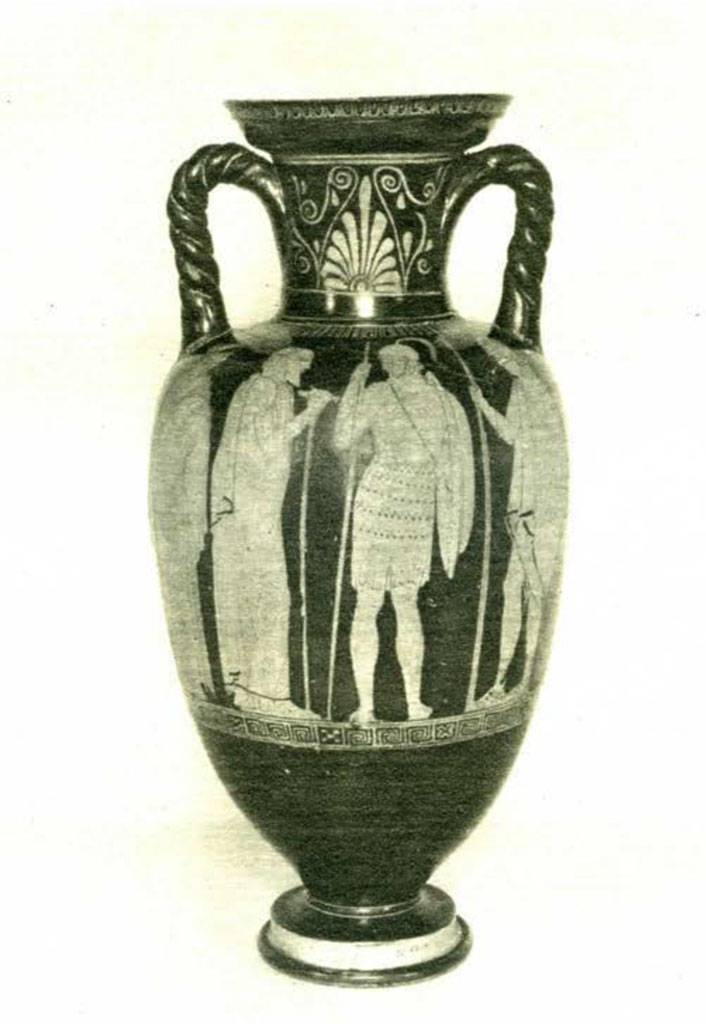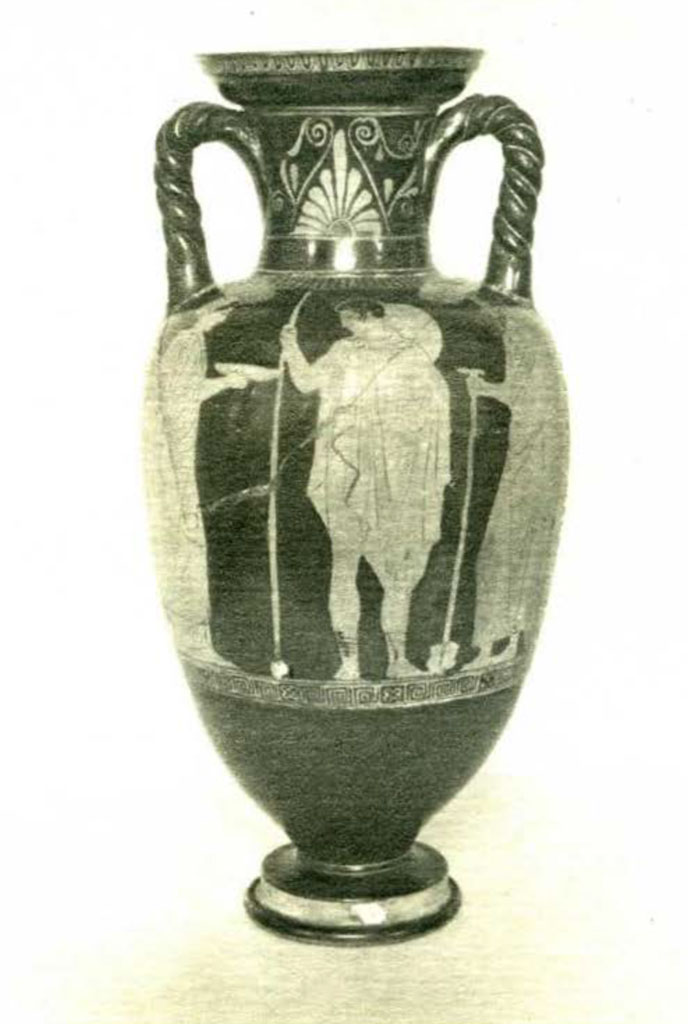
Museum Object Number: 30-44-4
Image Number: 2948
TO the third quarter of the fifth century before Christ has been assigned a large group of vases associated with the vase-painter Polygnotos. This artist is not to be confused with the great painter of murals, Polygnotos of Thasos, of whose Polyxena on the walls of the Lesche at Delphi a poet of the anthology wrote that “on her eyelids lay the whole of the Trojan war.” Yet, to the work of the great Polygnotos, the vases of this group do not stand unrelated, for they are descended from the work of the Niobid Painter, whose large impressive pieces have long been held by scholars to reflect the glories of the lost masterpieces of the great mural painters.
By an anonymous companion of the vase-painter Polygnotos is the neck-amphora of Plates X and XI, which once belonged to the Hope Collection, and which was recently acquired by the Museum.

Museum Object Number: 30-44-4
Image Number: 2950
On the obverse is represented Hector’s farewell to Priam and Hecuba. The hero stands facing us, already accoutred for battle, a round helmet with plume and cheek-pieces on his head, his sword slung over his shoulder, his spear in his right hand, and on his left arm a shield-which the artist has delighted to draw with the edge facing front. He wears a chiton and over it an embroidered loin cloth. His gaze is directed toward his aged father, whose long white hair falls in clustered locks beneath the bald crown of his head. The latter leans on his staff, and his eyes meet those of his son in an interchange of soulful looks. The figure of Priam is identified by an inscription, written above his head. The girlish Hecuba who stands behind him is not so marked, but may be identified by comparison with other scenes representing Hector’s farewell. She holds in her hand the jug from which will be poured a libation for her departing husband. She is clad in chiton and himation , and wears her hair in a sphendone, with foliate ornaments above the forehead. The fourth figure in the scene is a companion in arms of Hector, wearing a chlamys, high hoots, and a rounded helmet, and carrying two spears in his hand. On the reverse is represented a minor variation of the same theme. A warrior or traveller, wearing chlamys, high hoots and a petasos which has fallen back on his shoulders, takes his farewell of an aged man and of a young girl who extends toward him a phiale. Here, the soulful look is exchanged between the youth and maiden.
These pictures closely resemble the scenes on a red-figured stamnos by the Hector Painter, in the Sharpe gallery of the Museum, where again the subject is the warrior’s farewell and once more we see the jug, the phiale, the petasos fallen hack on the shoulders and the long sad gaze of parting. The theme was exceedingly popular in this period, chiefly, it seems, because it offered opportunity to center the action in the expression of the eyes. In these figures there is none of the animated gestures and lively movements which characterize earlier styles of vase-paintings. The figures are motionless. The action is that of the mind, not the body. This new style of representation is thought to have arisen under the influence of mural painting, so that the mute sorrow in the eyes of these figures may be regarded as a distant echo of the burden of woe that lay on the eyelids of Polyxena. But the tiresome repetitions of such scenes are a sign that the flame of genius has burned out. In the very period that produced the masterpieces of Greek sculpture, the art of vase-painting was approaching the end of its course.
E.H.D.

